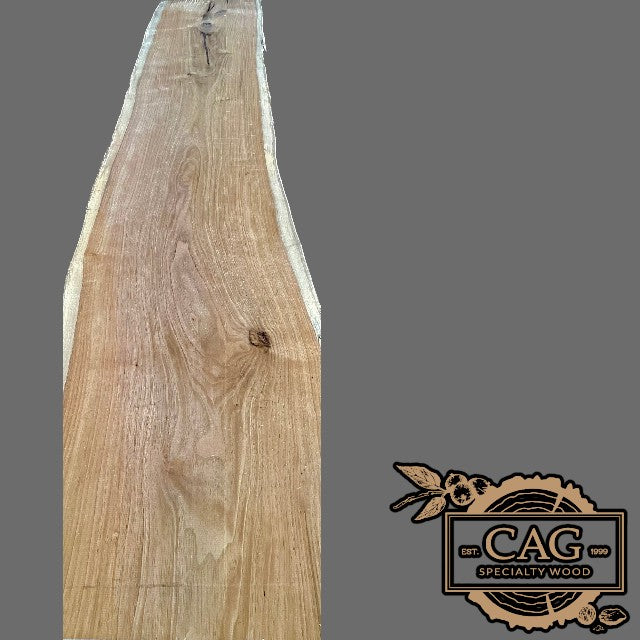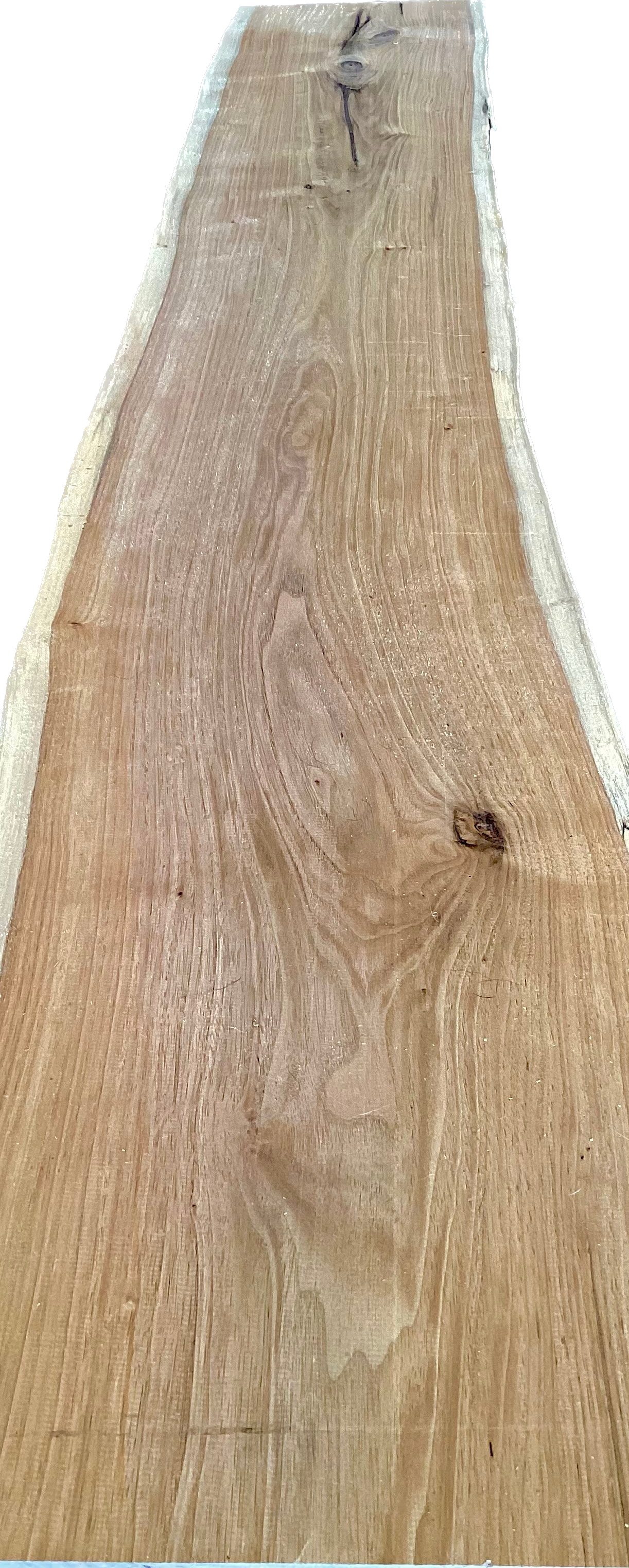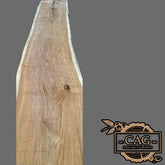

Butternut
|
Common Name(s): Butternut, White Walnut Scientific Name: Juglans cinerea Distribution: Eastern United States Tree Size: 65-100 ft (20-30 m) tall, 2-3 ft (.6-1 m) trunk diameter Average Dried Weight: 27 lbs/ft3 (435 kg/m3) Specific Gravity (Basic, 12% MC): .36, .43 Janka Hardness: 490 lbf (2,180 N) Modulus of Rupture: 8,100 lbf/in2 (55.9 MPa) Elastic Modulus: 1,180,000 lbf/in2 (8.14 GPa) Crushing Strength: 5,110 lbf/in2 (35.2 MPa) Shrinkage: Radial: 3.4%, Tangential: 6.4%, Volumetric: 10.6%, T/R Ratio: 1.9 |
Color/Appearance: Heartwood is usually a light to medium tan, sometimes with a reddish tint. Growth rings are darker and form fairly distinct grain patterns. Sapwood is a pale yellowish white.
Grain/Texture: Grain is typically straight, with a medium to coarse texture. Silky natural luster.
Endgrain: Semi-ring-porous; medium-large earlywood pores gradually decreasing to small latewood pores; solitary and radial multiples of 2-3; tyloses occasionally to abundantly present; growth rings distinct; rays barely visible without lens; parenchyma banded (marginal), apotracheal parenchyma diffuse-in-aggregates (sometimes very faint and barely visible even with lens).
Rot Resistance: Decay resistance is rated as moderately durable to non-durable.; also susceptible to insect attack.
Workability: Butternut is easily worked with both hand and machine tools. However, being so soft, Butternut has a tendency to leave some fuzzy surfaces after planing or sanding, and sharp cutters and fine-grit sandpaper is recommended. Butternut glues, stains, and finishes well.
Odor: Butternut has virtually no scent or odor when being worked.
Allergies/Toxicity: Besides the standard health risks associated with any type of wood dust, no further health reactions have been associated with Butternut. See the articles Wood Allergies and Toxicity and Wood Dust Safety for more information.
Pricing/Availability: Available as lumber and carving blanks. Prices are in the mid range for a domestic hardwood.
Sustainability: This wood species is not listed in the CITES Appendices or on the IUCN Red List of Threatened Species. However, many Butternut trees in North America are currently afflicted by a fungal disease (Sirococcus clavigigenti-juglandacearum) known as Butternut canker. The rapid decline of Butternut has prompted the US Fish and Wildlife Service to list it as a species of federal concern. The tree is protected in Canada as well.
Common Uses: Veneer, carving, furniture, interior trim, boxes, and crates.
Comments: Sometimes called White Walnut, Butternut is indeed closely related to Black Walnut. While the difference is not black and white, the wood of Butternut is considerably lighter-colored than Black Walnut, as well as being very soft and lightweight.
Butternut trees can be distinguished from Black Walnut by looking at its fruit: Butternut’s fruit is more oblong or oval shaped, while Walnut is nearly round; (see illustration below). The commercial potential of Butternut’s edible fruit (nuts) is generally regarded as being more valuable than its lumber. (Butternuts are not related to Butternut squash, which comes from an unrelated plant—Cucurbita moschata.)
The trunks of Butternut trees are fluted, which is sometimes still evident in processed lumber—the growth rings in the endgrain may appear more polygonal and faceted rather than perfectly circular.
Related Species:
- Bastogne Walnut (Juglans x paradox)
- Black Walnut (Juglans nigra)
- Claro Walnut (Juglans hindsii)
- English Walnut (Juglans regia)
- Peruvian Walnut (Juglans spp.)
Butternut
Butternut 4/4
4050 Old Cornelia Hwy
Gainesville GA 30507
United States
Wood Calculator Section
Need Help Figuring out how much you need ?
One Board foot = 144 Cubic Inches
Example: If you need a piece of wood 12 inches wide, 1 inch thick and 24 inches long, that is equal to 2 board feet.
12 inches x 1 inch x 24 inches = 288 inches. 288/ 144 = 2 board feet


